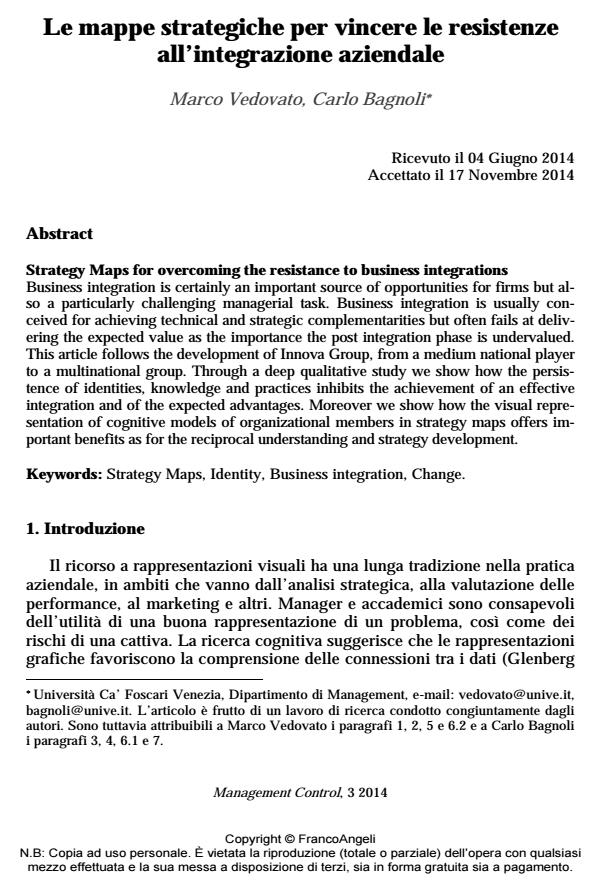Strategy Maps for overcoming the resistance to business integrations
Journal title MANAGEMENT CONTROL
Author/s Marco Vedovato, Carlo Bagnoli
Publishing Year 2015 Issue 2014/3
Language Italian Pages 26 P. 11-36 File size 138 KB
DOI 10.3280/MACO2014-003002
DOI is like a bar code for intellectual property: to have more infomation
click here
Below, you can see the article first page
If you want to buy this article in PDF format, you can do it, following the instructions to buy download credits

FrancoAngeli is member of Publishers International Linking Association, Inc (PILA), a not-for-profit association which run the CrossRef service enabling links to and from online scholarly content.
Business integration is certainly an important source of opportunities for firms but also a particularly challenging managerial task. Business integration is usually conceived for achieving technical and strategic complementarities but often fails at delivering the expected value as the importance the post integration phase is undervalued. This article follows the development of Innova Group, from a medium national player to a multinational group. Through a deep qualitative study we show how the persistence of identities, knowledge and practices inhibits the achievement of an effective integration and of the expected advantages. Moreover we show how the visual representation of cognitive models of organizational members in strategy maps offers important benefits as for the reciprocal understanding and strategy development.
Keywords: Strategy Maps, Identity, Business integration, Change.
- Controllo e complessità. Il ruolo delle forme di rappresentazione per il governo di problemi complessi Filippo Zanin, Eugenio Comuzzi, in MANAGEMENT CONTROL 2/2016 pp.89
DOI: 10.3280/MACO2016-002005
Marco Vedovato, Carlo Bagnoli, Le mappe strategiche per vincere le resistenze all’integrazione aziendale in "MANAGEMENT CONTROL" 3/2014, pp 11-36, DOI: 10.3280/MACO2014-003002